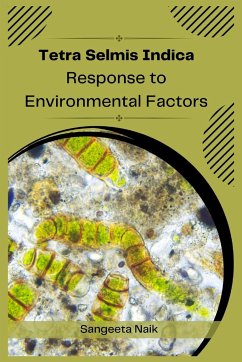The microalga Tetraselmis indica is a promising candidate for various industrial and environmental applications, and its response to environmental factors is critical for its growth, physiology, and biochemical composition. In this study, Sangeeta Naik investigates the response of T. indica to various environmental factors, including nutrient availability, light intensity, temperature, salinity, pH, and carbon dioxide concentration. The study examines the growth characteristics of T. indica under different environmental conditions and investigates the physiological and biochemical changes that occur in response to these conditions. Nutrient availability, light intensity, and temperature are shown to have a significant effect on T. indica growth, while salinity and pH have a more moderate effect. The study also highlights the critical role of carbon dioxide in the growth and physiology of T. indica, with higher concentrations of carbon dioxide resulting in improved growth and lipid production. The study further investigates the stress response mechanisms of T. indica, including the response to abiotic and biotic stress. The study shows that T. indica can tolerate a wide range of environmental stress conditions and employs various stress response mechanisms to adapt to these conditions. The study examines the effect of stress on various metabolic pathways, including photosynthesis, respiration, lipid metabolism, carbohydrate metabolism, and protein metabolism. The study also highlights the nutritional value of T. indica and its potential applications in aquaculture, bioremediation, and biofuel production. The high-value products of T. indica, including polyunsaturated fatty acids such as eicosapentaenoic acid and docosahexaenoic acid, make it an attractive candidate for various industrial applications. The study further discusses the ecological impact of T. indica and the importance of environmental management for sustainable development. The potential for T. indica to mitigate the effects of climate change, global warming, and ocean acidification is also discussed. Overall, this study provides valuable insights into the response of T. indica to environmental factors and highlights its potential for various industrial and environmental applications.








